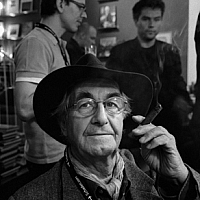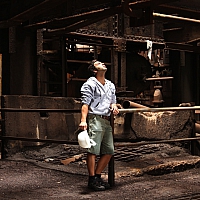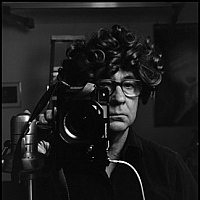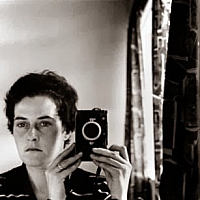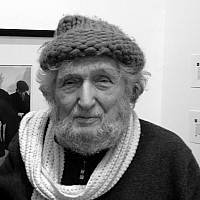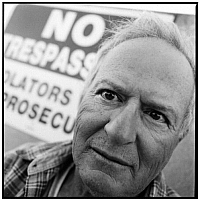
Expositions du 10/10/2014 au 31/10/2014 Terminé
Galerie Esther Woerdehoff 36 rue Falguière 75015 Paris France
Curated by Galerie Esther Woerdehoff, Drive-In is an exhibition about cars, showing the approach of this subject by numerous photographers, from the fifties to nowadays.Galerie Esther Woerdehoff 36 rue Falguière 75015 Paris France
When Elliott Erwitt, during and after the depression era, photographed those rolling dreams with his candid sense of humor and irony, cars, especially the very large and imposing ones, were already a landmark in the American landscape. In the early fifties, when Swiss photographer Robert Frank, thanks to a Guggenheim fellowship grant, drove his car across America for two years, he had his family with him. The picture of his wife Mary and their two children, totally exhausted and half asleep in the car, is an iconic image in the history of photography.
When René Burri travelled to Brazil to document the building of modern cities, one of his most stunning photographs, Sao Paulo 1960, is a view of the rush hour traffic on a busy street. Simone Kappeler, another Swiss photographer, drove through America in 1981, 30 years after her fellow countryman Robert Frank, and took pictures with her Hasselblad, a Polaroïd and cheap toy cameras like Diana. She saw America in color, influenced by American movies and photography. Driving a Gran Torino through the West she shows her fascination for this country built around the car culture, so different from what she knew back in small Switzerland. For Jason Langer or Andreas Fux, cars are elements of a vintage and elegant vision of the city in their black and white pictures, whereas for Xavier Dauny their absence become a conceptual questioning of the landscape ...
Symbol of the American dream, of the rise of the middle class and of individualism through the whole XXth century, cars appear in a great amount of photographies. With the rise of Street Photography, cars were bound to peep out on most photos taken. Still cars are photographed not only as a transportation device through the packed streets of cities or in the great outdoors emptiness but also as a traveling place of intimacy in the public space, where people talk, eat, sleep, love, as in a ever moving home. For photographers, cars are elements of decor, mechanical sculptures with their own modern esthetic, frames that echoes the camera’s viewfinder but also boxes where small scenes take place between people as in a moving theater. Cars ends up belonging to a cinematographic imaginary and become a subject for their own esthetic qualities of machines and the symbolic of speed, power and freedom they convey.


